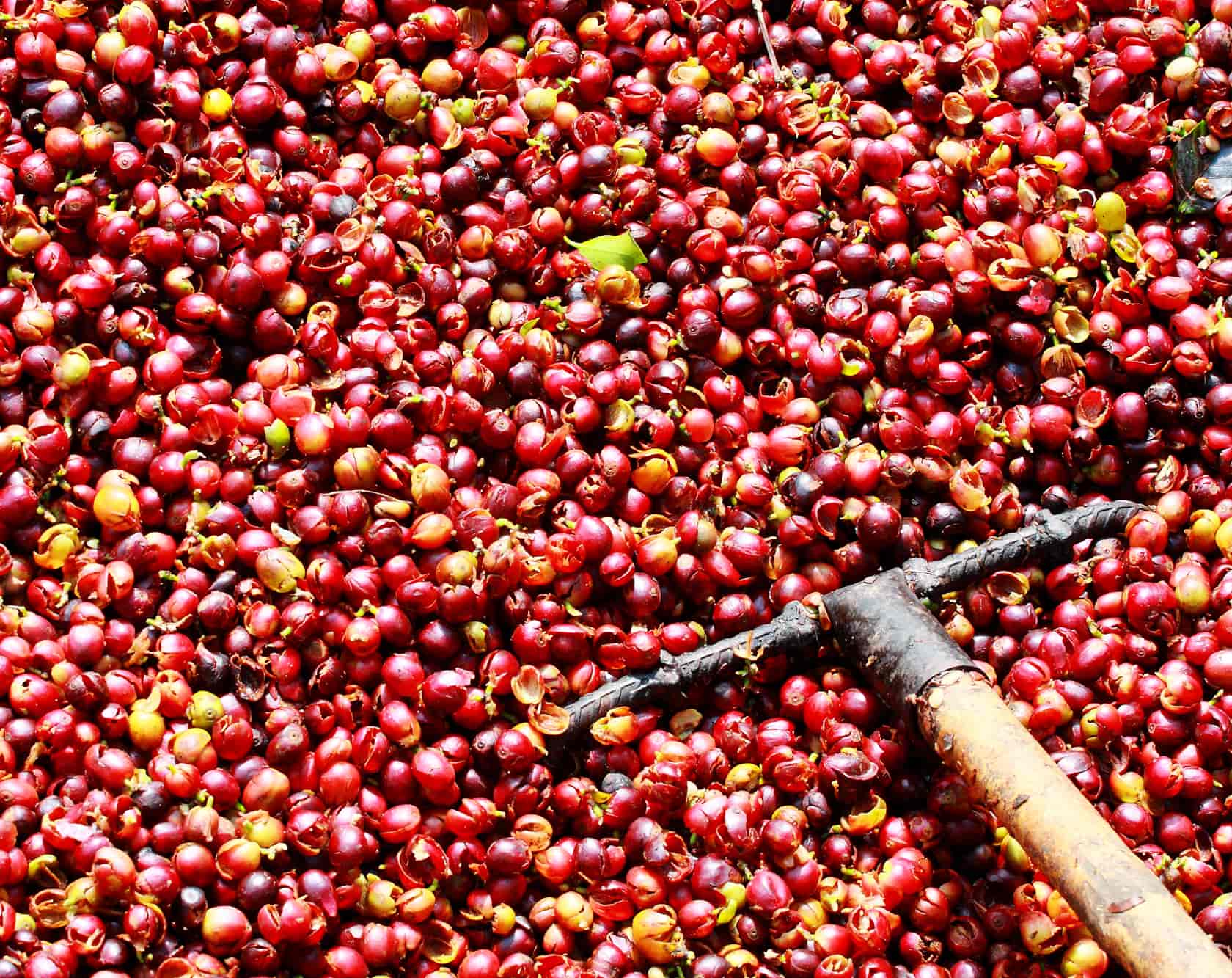Sumatran coffees showcase how several factors influence a coffee’s taste. Sumatra is an island in Southeast Asia that seems to be ideally suited for growing arabica coffee. Because of the unique processing method, wet hulling, that’s used by most farmers, Sumatran coffees tend to have distinct characteristics. While a few coffee drinks favor the region’s earthy tones, low acidity and full body, it’s often disregarded by most coffee connoisseurs today as an inferior product.
Most Sumatran Coffee Is Wet Hulled
Wet hulling, or Giling Bashan, is the most common processing method used in Sumatra. Even though coffees processed this way are sometimes called natural or dry processed, wet hulling is distinct from natural processing methods used in other parts of the world, such as Ethiopia. Wet hulling involves the following steps:
- Farmers remove the skin of the coffee cherry immediately after picking using homemade machines.
- The skinned beans are placed in woven bags and left to ferment overnight
- The following morning, farmers wash off the mucilage (remaining fruit) by hand
- The beans, in their parchment, are partially dried in the farmer’s yard
- The coffee is shipped to a warehouse, where the parchment is removed, and the beans are dried more
- The beans are shipped to a port city for exportation, and dried a third time at the port city
Wet Hulling Leaves Coffee More Moist for Longer
Part of the reason the beans aren’t dried by farmers is because Sumatra has such a wet climate, which is great for growing coffee trees but poses processing challenges. In most processing methods, coffee beans are dried until their moisture levels are between 9 and 11 percent when they leave the processing facility. Because wet hulling involves three stages of drying, the coffee’s moisture remains well above 11 percent for a long time — often until it’s finally exported.
Wet Hulling Produces Unique Characteristics
Most of Sumatran coffee’s unique characteristics stem from wet hulling. The modified natural processing method and extended drying time produce coffees with muted flavors and aromas. Instead of being known for their notes, Sumatran coffees are typically characterized by their full bodies and low acidity. The aromas and flavors they do feature tend to be funky: earthy, spicy, wild, mossy, mushroomy. Depending on who you ask, they might taste like a wild mushroom grown among a mossy forest, or like your grandfather’s old leather shoes.
To enhance the coffees’ unique characteristics, and to counteract the high variance that’s introduced by a multi-stage processing method and using homemade hulling machines, most roasters roast Sumatran selections dark. This builds on their body and adds a roast-induced richness to the beans.
If you’ve never had a Sumatran coffee, try one the next time you’re able to. We can’t promise that you’ll like it, but it’ll be unlike most coffees that you drink. You might come to love the bold bodies and funky flavors of Sumatra, or you may gain a new appreciation for the processing methods used in other parts of the world. Either way, you’ll learn something about coffee.

